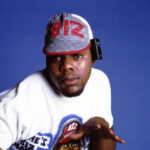‘Twinkle Twinkle Little Star’ is a globally recognized nursery rhyme, beloved for its simple yet captivating melody and easily remembered lyrics. This quintessential lullaby is often one of the first songs children learn, but have you ever wondered about the origins of ‘Twinkle Twinkle Little Star’? Who penned the memorable ‘twinkle, twinkle’ and how did this simple rhyme become such an enduring classic?
This article delves into the fascinating history of ‘Twinkle Twinkle Little Star’, exploring its poetic roots, the familiar tune it borrows, and its surprising connections to classical music. We will uncover the full lyrics of this enchanting song and explore why it continues to captivate generations.
The Poem Behind the Rhyme: Jane Taylor’s ‘The Star’
The words to ‘Twinkle Twinkle Little Star’ originate from a poem titled “The Star,” written by English poet Jane Taylor. Born in 1781, Taylor, along with her sister Ann, was a prolific writer of children’s verses. “The Star” was part of a collection of rhymes published in 1806 called Rhymes for the Nursery.
Taylor’s poem, written in simple couplets, perfectly lends itself to a song format. The first verse of “The Star” is virtually identical to the lyrics we sing today as ‘Twinkle Twinkle Little Star’. The poem captures a child’s wonder and innocent curiosity about the night sky, personifying a distant star as a twinkling, mysterious entity. This childlike perspective is a key element of the song’s enduring appeal.
The Familiar Melody: ‘Ah! vous dirai-je, Maman’
While Jane Taylor provided the enchanting words, the melody of ‘Twinkle Twinkle Little Star’ predates the poem. The tune is borrowed from a popular French folk melody called “Ah! vous dirai-je, maman,” which translates to “Ah! Shall I tell you, Mama.” This melody first appeared in 1761 and was used for various songs, not just in France but across Europe.
This simple and catchy tune contributed significantly to the popularity of ‘Twinkle Twinkle Little Star’. Its easy-to-sing nature makes it ideal for young children and lullabies. Interestingly, the same melody is also used for other well-known children’s songs like ‘Baa, Baa, Black Sheep’ and the ‘Alphabet Song’, demonstrating the tune’s universal appeal and adaptability.
Mozart’s Variations: A Classical Nod to a Children’s Tune
The seemingly simple melody of ‘Twinkle Twinkle Little Star’ even caught the attention of classical music giants. Wolfgang Amadeus Mozart, the renowned Austrian composer, famously composed “Twelve Variations on ‘Ah vous dirai-je, Maman'” (K. 265/300e) between 1781 and 1782.
In this elegant piece for solo piano, Mozart takes the simple tune and embellishes it with increasing complexity and virtuosity across twelve variations. This showcases the inherent musicality within the seemingly basic melody and elevates it to a sophisticated classical form. Mozart’s variations are a testament to the tune’s enduring charm and its capacity to inspire creativity across genres.
Beyond Mozart, the ‘Twinkle Twinkle’ melody has subtly appeared in other classical compositions. It is rumored to be hinted at in the second movement of Joseph Haydn’s Symphony No. 94, known as the “Surprise Symphony.” Franz Liszt also incorporated it in his Album Leaf, and Camille Saint-Saëns playfully quoted it in “Fossils” from The Carnival of the Animals. These instances highlight the tune’s pervasive presence in Western musical culture, spanning from children’s songs to high art.
Full Lyrics of ‘Twinkle Twinkle Little Star’
While often only the first verse is sung, Jane Taylor’s original poem “The Star” actually consists of five stanzas, all of which can be sung to the familiar ‘Twinkle Twinkle’ melody. Knowing the full lyrics reveals a slightly more complex and narrative picture painted by the poem:
Twinkle, twinkle, little star,
How I wonder what you are!
Up above the world so high,
Like a diamond in the sky.
When the blazing sun is gone,
When he nothing shines upon,
Then you show your little light,
Twinkle, twinkle, all the night.
Then the trav’ller in the dark,
Thanks you for your tiny spark,
He could not see which way to go,
If you did not twinkle so.
In the dark blue sky you keep,
And often thro’ my curtains peep,
For you never shut your eye,
Till the sun is in the sky.
‘Tis your bright and tiny spark,
Lights the trav’ller in the dark,
Tho’ I know not what you are,
Twinkle, twinkle, little star.
These additional verses expand on the initial wonder, describing the star’s role in the night sky, its light guiding travelers, and its constant presence until sunrise. The full poem offers a richer appreciation for the simple beauty of a twinkling star.
Parodies and Adaptations: Twinkle Twinkle Beyond the Nursery
The enduring popularity of ‘Twinkle Twinkle Little Star’ has led to numerous parodies and adaptations over time, demonstrating its cultural penetration and adaptability.
One famous example is found in Lewis Carroll’s Alice’s Adventures in Wonderland. In chapter seven, the Mad Hatter recites a whimsical parody:
Twinkle, twinkle, little bat!
How I wonder what you’re at!
Up above the world you fly,
Like a teatray in the sky.
This playful twist highlights the recognizable rhythm and rhyme scheme of ‘Twinkle Twinkle’ while injecting Carroll’s signature absurdity.
In a more unusual adaptation, the song was reimagined in the album Leonard Nimoy Presents Mr. Spock’s Music from Outer Space. Here, “star” is replaced with “Earth,” sung from the perspective of ‘star people’ observing our planet. This version showcases the song’s versatility and its ability to be reinterpreted in vastly different contexts.
Conclusion: The Enduring Sparkle of ‘Twinkle Twinkle’
‘Twinkle Twinkle Little Star’ is far more than just a simple children’s song. It is a cultural touchstone with roots stretching back centuries, connecting a poem of childlike wonder to a timeless French melody. From Jane Taylor’s verses to Mozart’s elegant variations and countless parodies, ‘Twinkle Twinkle Little Star’ continues to shine brightly in our collective consciousness. Its simple words and memorable tune ensure its place as a beloved lullaby and a foundational song for generations to come.

